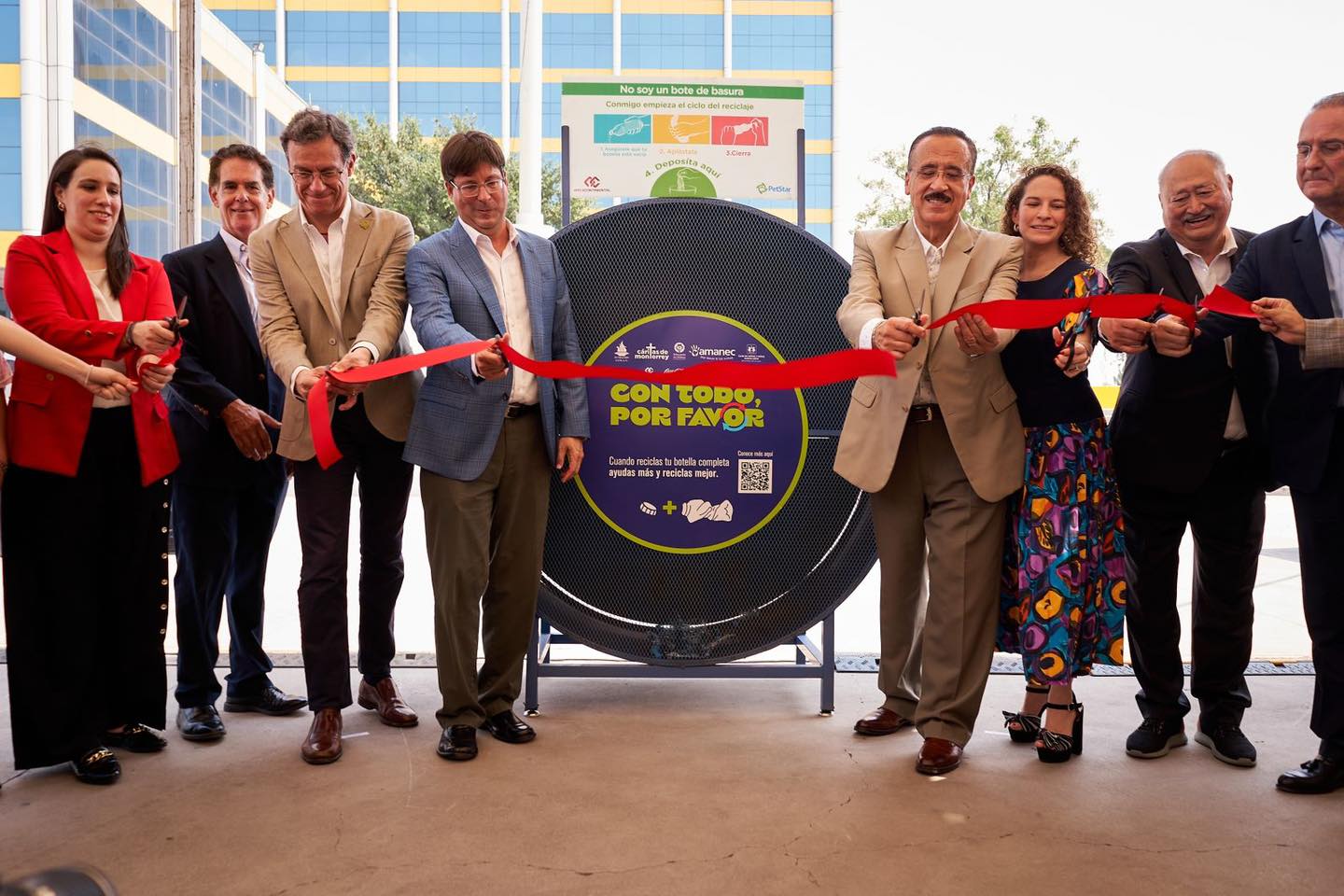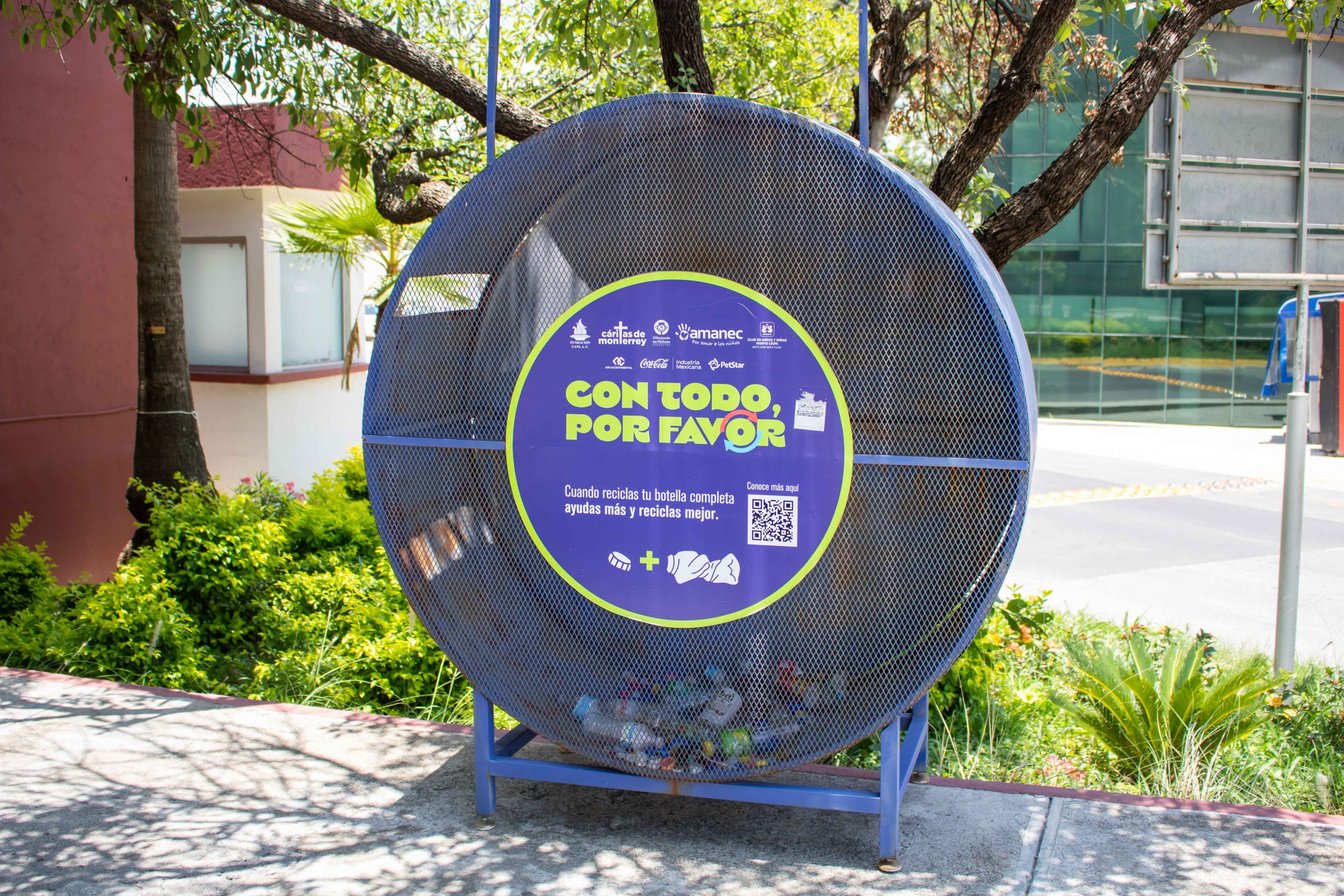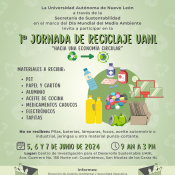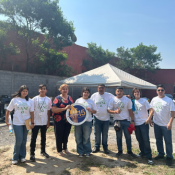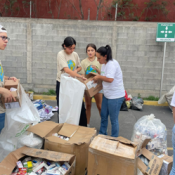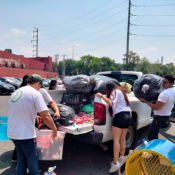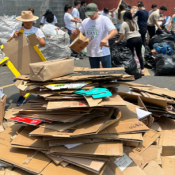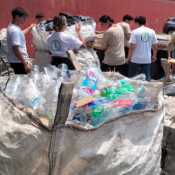Handling and management of waste with recyclable characteristics
Handling and management of waste with recyclable characteristics
Global phenomena such as population growth, the growing trend towards urbanization, economic growth and clearly unsustainable production and consumption patterns linked to a linear economy have generated a constant increase in waste generation. These characteristics are present in the Latin American and Caribbean region, where approximately 80% of the population is urban. According to the studies carried out, the inevitable consequence of the aforementioned characteristics projects an exponential increase in waste generation in the region of more than 60% by 2025 (World Bank, 2012).
Environmentalists try to warn about the consequences of a linear economy that began with the first Industrial Revolution and that can be summarized in the notion of take-make-throw away, that is, extracting natural resources to use them in the processes of production and distribution of goods, whose waste must be disposed of. The result: a society oriented to generate waste. However, towards the end of the 20th century, exponential industrial growth already began to show signs of scarcity of natural resources due to their excessive use and the consequent depletion of their reserves. The thinking presented and the data of reality lead to the consistent conclusion that this economic model is clearly not sustainable for a world of 7 billion inhabitants who aspire to obtain a higher standard of living, and even less for the 9 billion projected for 2050. In 2015, the population of Latin America and the Caribbean, in particular, was estimated at 630 million people, and the projection for 2025 amounts to 691 million (UNEP, 2016). The solution then is a paradigm shift with one goal: a society oriented towards generating resources. This is how the concept of circular economy, focused on reproducing the biological mechanism of nature by incorporating the idea of an industrial metabolism based on thinking and designing products so that after a first use they can be reused or become a secondary raw material for a new industrial process or to generate alternative energy, thus displacing fossil fuels. In this way, a transition path begins where the fundamental objective is to leave aside the concept of final disposal of waste inherited from the linear economy to successively move on to adequate waste management until true management of resources as an integral part of a circular economy.
Composition of Urban Solid Waste (MSW)
Los componentes encontrados en los RSU son muy variados, esto es debido a los diferentes factores relacionados con la actividad humana; pueden estar determinados por las características de la población que los genera, el nivel cultural y económico de la población (urbana, rural, turística, industrial, etc.), también pueden variar según la época del año en que se generan. Los RSU con características reciclables (papel, cartón, plástico, metal y vidrio) constituyen una fracción sustancial que va desde el 16% en países de bajos ingresos hasta alrededor del 50% en los países de altos ingresos.
According to the report data What a waste 2.0: A global snapshot of solid waste management to 2050 According to a report published by the World Bank, global MSW generation in 2016 was estimated to have reached 2.01 billion tonnes (Mt). By 2030, the world is expected to generate 2.59 billion tonnes (Mt) of waste annually and by 2050, the figure is expected to reach 3.4 billion tonnes. In Mexico, according to the most recent figure published in the World Bank, Basic diagnosis for comprehensive waste management of the Secretariat of Environment and Natural Resources (SEMARNAT) In 2020, the estimated per capita generation of MSW was 0.944 kg/inhab/day and the total generation of waste in the country is estimated at 120,128 t/day. 31.56% corresponds to waste susceptible to use, 46.42% to organic waste and 22.03% to “other waste”. In this sense, at the federal level, SEMARNAT promotes the comprehensive management of waste, from its generation to its final disposal, passing through the intermediate stages of collection, transportation, storage-transfer, use and treatment, through plans, programs and a regulatory framework, complemented by strategies for education, training, communication and strengthening of the legal and administrative framework, among others. In this area, the Sustainability Secretariat (SS) of the Autonomous University of Nuevo León (UANL), through the Directorate of Environmental Management and Operational Safety (DGASO), is implementing a comprehensive management plan for the different types of waste generated on the UANL campuses, with the aim of eliminating and/or minimizing the impacts caused by inadequate management of the same, thus complying with current environmental regulations and promoting a culture of environmental care among the university community and its social environment.
Urban Solid Waste (MSW) at the UANL
Durante el 2024 se generó un total de 3,195.33 t de RSU en la UANL, de las cuáles el 32% corresponde a residuos orgánicos y el 68% restante a inorgánicos. Dichos residuos son segregados en las diferentes dependencias para separar los materiales valorizables y son recolectados y trasladados por empresas autorizadas al relleno sanitario del Sistema Integral para el Manejo Ecológico y Procesamiento de Desechos (SIMEPRODE), ubicado en el municipio de Salinas Victoria, Nuevo León y el cual es administrado por el Gobierno del Estado de Nuevo León. En este lugar los RSU son depositados en celdas especiales donde se compactarán para reducir su volumen y se cubrirán con capas de arcilla y tierra asegurando un tratamiento bajo condiciones anaerobias. Dichas instalaciones cuentan con infraestructura para la captación del metano (biogás) producido por la descomposición anaeróbica de los residuos orgánicos, así como con pozos para el monitoreo de lixiviados.
El biogás es conducido a través de un sistema especial hacia la planta de bioenergía de Servicios Sustentables de Nuevo León S.A. de C.V. (SSNL), anexa al relleno, donde es convertido en energía eléctrica la cual es utilizada para alimentar la red de alumbrado público de siete municipios del área metropolitana de Monterrey, cinco dependencias del gobierno estatal, el parque fundidora, además de proveer energía al sistema colectivo de transporte Metrorrey (tren eléctrico urbano) como parte de las acciones de mitigación de gases de efecto invernadero realizadas en el país.
Organic waste
El conocimiento de la composición de los residuos se utiliza fundamentalmente para determinar los subproductos o fracciones de los residuos aprovechables o que puedan ser valorizados, y cuáles serían los sistemas más adecuados para ello. En la UANL, los residuos orgánicos generados están compuestos principalmente por residuos de alimentos y residuos de jardinería. Durante el 2024 se generaron 1,022.51 t de dichos residuos, los cuáles fueron sometidos a tratamiento en SIMEPRODE.
Con lo anterior se garantiza que el 100% de los residuos orgánicos generados en la UANL sean tratados de una forma ambientalmente adecuada.
Waste Separation and Recycling Program (PROSER)
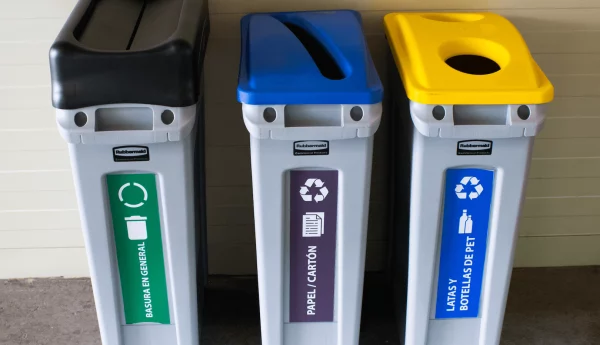
In February 2013, in the rector's tower and the administrative offices located in Ciudad Universitaria, the Waste Separation and Recycling Program (PROSER) of the UANL with the objective of maximizing the use of recyclable waste and preventing or reducing the impacts on the environment. For the process of recycling and transforming the waste obtained, there is support from several local companies with extensive experience in the management of recyclables, thus ensuring the correct management and final disposal of MSW with recyclable characteristics. Currently, the program operates through a network of collaboration and commitment of several UANL departments, where each one segregates its waste in special containers intended for this purpose.
Once the waste is collected at the UANL facilities by local companies, it is incorporated as raw material into their processes and/or those of third parties for the production of new products. Having said that, the MSW with recyclable characteristics generated at the UANL follow a circular economy model as established by the General Law of Circular Economy in Mexico.
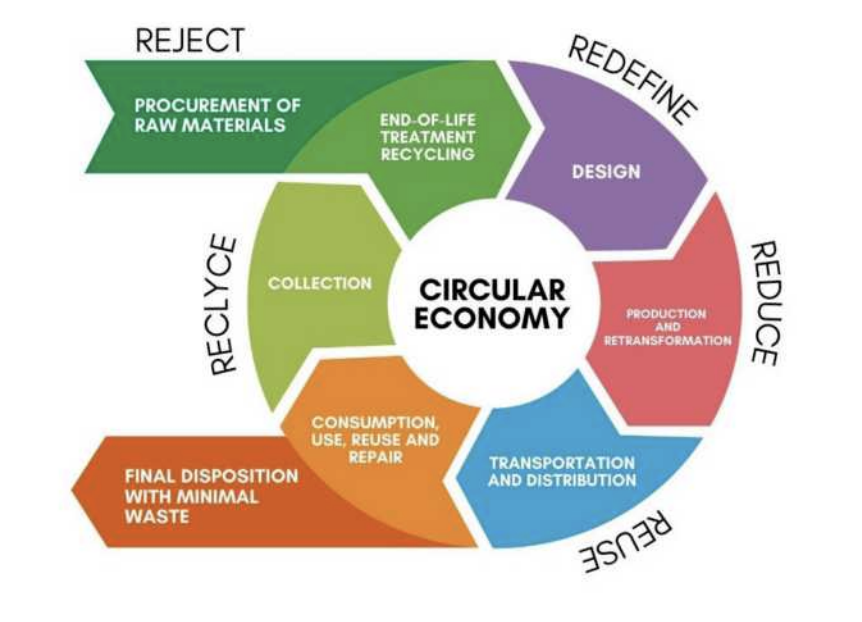
In Mexico, the “National Vision towards sustainable management: zero waste” was promulgated in 2019 with the aim of transforming the traditional waste management scheme into a circular economy model, for the rational use of natural resources and favoring sustainable development in the country. In this sense, it is sought that MSW with recyclable characteristics be incorporated as raw material for the production of new products such as cardboard, recycled paper, aluminum cans and PET bottles.
The collection of recyclable material (paper, cardboard, PET and aluminum) is currently carried out systematically in 52 academic departments and 26 central departments (representing a 17% increase in program coverage compared to 2022) from UANL, which are listed below:
- 1. Centro de Investigación y Desarrollo de Educación Bilingüe
- 2. Escuela Industrial y Preparatoria Técnica Pablo Livas
- 3. Escuela Industrial y Preparatoria Técnica Álvaro Obregón
- 4. Escuela y Preparatoria Técnica Médica
- 5. Preparatoria No. 1
- 6. Preparatoria No. 2
- 7. Preparatoria No. 3
- 8. Preparatoria No. 4
- 9. Preparatoria No. 5
- 10. Preparatoria No. 6
- 11. Preparatoria No. 7
- 12. Preparatoria No. 8
- 13. Preparatoria No. 9
- 14. Preparatoria No. 10
- 15. Preparatoria No. 12
- 16. Preparatoria No. 13
- 17. Preparatoria No. 14
- 18. Preparatoria No. 15
- 19. Preparatoria No. 16
- 20. Preparatoria No. 17
- 21. Preparatoria No. 18
- 22. Preparatoria No. 19
- 23. Preparatoria No. 20
- 24. Preparatoria No. 21
- 25. Preparatoria No. 22
- 26. Preparatoria No. 23
- 27. Preparatoria No. 25
- 28. Facultad de Agronomía
- 29. Facultad de Arquitectura
- 30. Facultad de Artes Visuales
- 31. Facultad de Ciencias Biológicas
- 32. Facultad de Ciencias de la Comunicación
- 33. Facultad de Ciencias de la Tierra
- 34. Facultad de Ciencias Físico-Matemáticas
- 35. Facultad de Ciencias Forestales
- 36. Facultad de Ciencias Políticas y Relaciones Internacionales
- 37. Facultad de Ciencias Químicas
- 38. Facultad de Contaduría Pública y Administración
- 39. Facultad de Derecho y Criminología
- 40. Facultad de Economía
- 41. Facultad de Enfermería
- 42. Facultad de Filosofía y Letras
- 43. Facultad de Ingeniería Civil e Instituto
- 44. Facultad de Ingeniería Mecánica y Eléctrica
- 45. Facultad de Medicina y Hospital Universitario
- 46. Facultad de Medicina Veterinaria y Zootecnia
- 47. Facultad de Música
- 48. Facultad de Odontología
- 49. Facultad de Organización Deportiva
- 50. Facultad de Salud Pública y Nutrición
- 51. Facultad de Trabajo Social y Desarrollo Humano
- 52. Biblioteca Universitaria Raúl Rangel Frías
- 53. Biblioteca Especializada en Ciencias Agropecuarias
- 54. Capilla Alfonsina Biblioteca Universitaria
- 55. Teatro Universitario
- 56. Centro Cultural Universitario
- 57. Centro de Incubación de Empresas y Transferencia de Tecnologías
- 58. Centro de Investigación y Desarrollo de Ciencias de la Salud
- 59. Centro Universitario de Salud
- 60. Centro de Educación Digital y Emprendimiento
- 61. Centro Acuático Olímpico Universitario
- 62. Centro de Investigación en Producción Agropecuaria
- 63. Centro de Internacionalización
- 64. Centro de exposiciones Agropecuarias
- 65. Centro de Investigación para el Desarrollo Sustentable
- 66. Imprenta Universitaria
- 67. Almacén General
- 68. World Trade Center
- 69. Sorteos UANL
- 70. Polideportivo Tigres Escobedo
- 71. Unidad Académica Linares
- 72. Dirección de Actividades Estudiantiles
- 73. Departamento de Becas
- 74. Departamento Escolar y de Archivo
- 75. Dirección de Servicio Social y Prácticas Profesionales
- 76. Dirección de Servicios Médicos
- 77. Dirección General de Planeación y Proyectos Estratégicos y Unidad de Seminarios
- 78. Dirección General de Tecnologías y Desarrollo Digital
These facilities continually offer training lectures to students and teachers on the correct handling and disposal of different types of waste, in order to obtain the most benefit from these recycling programs.
Dentro del periodo febrero 2013 a diciembre 2024 se recolectaron un total de 2,253.93 t de material reciclable como se observa en la siguiente gráfica, con lo cual se han obtenido beneficios ambientales tales como: ahorro de energía de 10,059,710 kWh, 67,859,546 L de agua no consumida, 32,715 árboles no talados, 7,683 t de CO2 no emitidas, 393,329 L de petróleo no utilizados, 6,407 m3 de relleno sanitario no utilizado y 212 t de bauxita no utilizadas.
Programa con todo por favor
Con la finalidad de ampliar la cobertura para promover la cultura del reciclaje y concientizar a la población universitaria sobre la importancia de evitar que los residuos plásticos contaminen el medio ambiente al no ser manejados de forma adecuada, la UANL a través de la Fundación UANL A.C. colabora con las empresas Arca Continental y PetStar en el programa “Con todo por favor” el cual fue iniciado en el mes de mayo de 2024. A través de esta iniciativa, un total de 17 contenedores especiales fueron instalados en puntos estratégicos dentro de los campus de la UANL.
Este programa consiste en colocar las botellas de plástico PET vacías incluyendo tapa y etiqueta dentro de los contenedores, para posteriormente ser llevadas a la planta de reciclaje de PET grado alimenticio (PetStar) donde serán sometidas a reciclaje para elaborar nuevas botellas. Dentro del periodo mayo- diciembre 2024 se acopiaron 540 kg de PET dentro de este programa.
1st. UANL Recycling Day
On June 5, 6 and 7, 2024, the 1st. UANL Recycling Day organized by the Secretariat of Sustainability through the Directorate of Environmental Management and Operational Safety, with the UANL Research Center for Sustainable Development as its headquarters. The event was aimed at the university community and the general public. The purpose of the event was to serve as a means to achieve proper disposal of waste and protect the environment, while at the same time promoting the recycling of materials.
On this occasion, various materials were received such as: PET, aluminum, paper, cardboard, among other materials.
Para la organización y logística se contó con la activa participación de mas de 60 personas entre alumnos y profesores de diferentes dependencias, así como de asociaciones estudiantiles, voluntarios y empresas.
Durante el año 2024 se recolectaron 224.95 t de material reciclable, (incluyendo lo recolectado en el PROSER y la jornada de reciclaje) con lo cual se obtuvieron importantes beneficios ambientales entre los que destacan un ahorro de energía de 972,615 kWh y 6,514,062 L de agua.
It is important to mention that the success of the different programs has been thanks to the commitment of the university community to adopt sustainable practices within their daily activities and thus support the care of the environment.
Technical guidelines for the handling and management of waste
The UANL Sustainability Secretariat, through the Environmental Management and Operational Safety Directorate, formulated technical guidelines:
These serve as support for the correct handling and management of waste in all departments.




